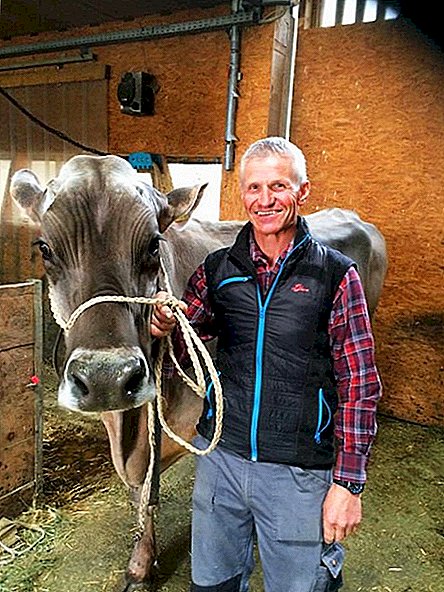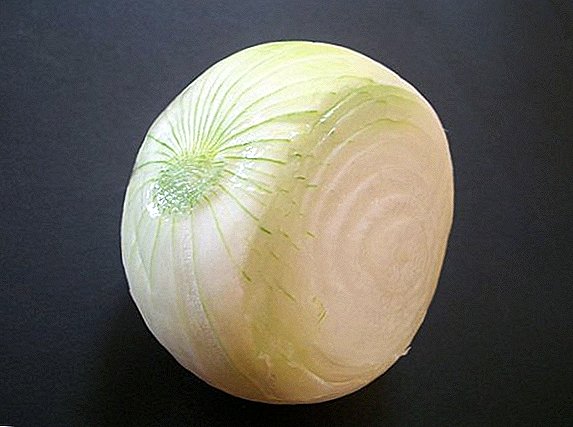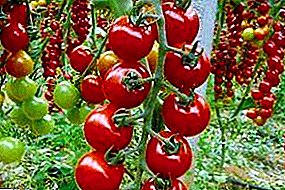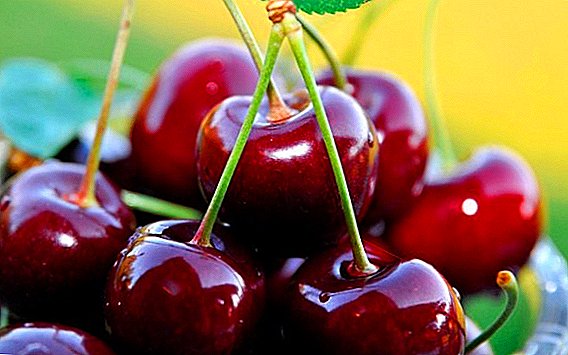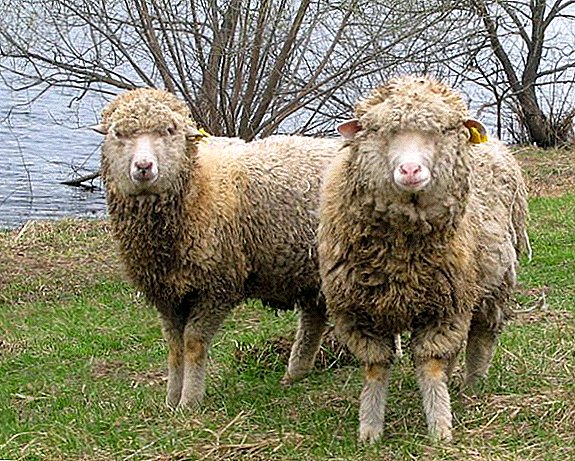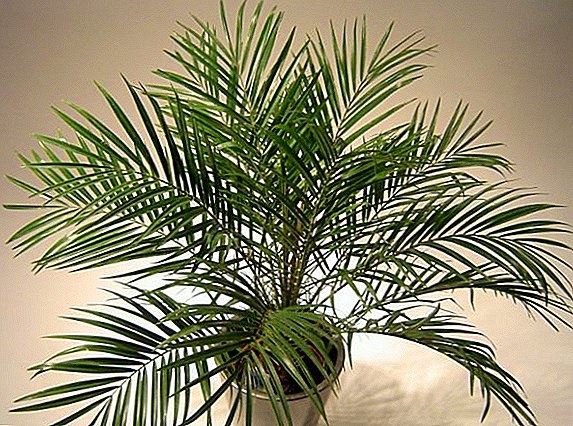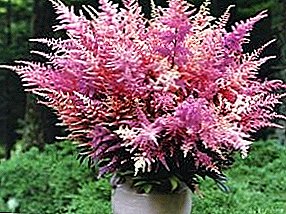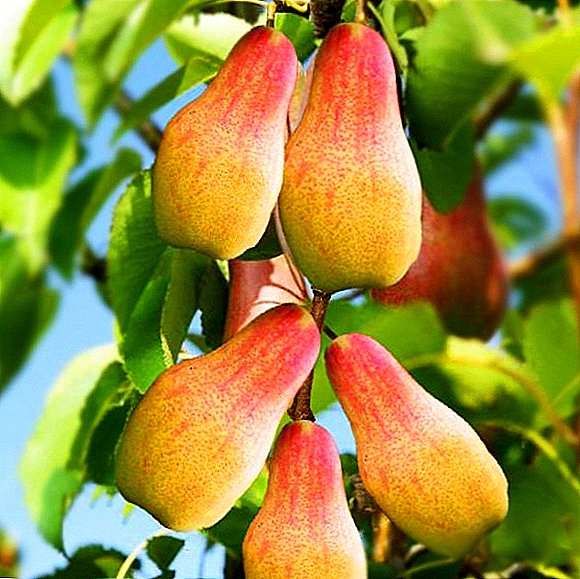
Ever flowering begonia (lat. Begonia semperflorens) is a perennial hybrid plant belonging to the Begonia family. Species name was obtained for continuous flowering - both in winter and summer. In reference books you can find names - always flowering and continuous flowering, in the people the plant is called "girlish beauty." This article will tell you about the features of this wonderful plant, how it multiplies and how to multiply it at home using cuttings or seeds, as well as the rules for the subsequent care of the flower.
Features of the plant
For a plant characteristic:
- fleshy bare stem (8-40 cm);
- dark green, smooth, glossy leaves;
- unisexual monophonic and two-colored flowers (white, red, pink, coral, cream).
Brazil is considered the birthplace of the ever-flowering begonia. The breeders' labor cultivated varieties and species adapted for life in various conditions, not only in tropical climates. The efforts of breeders are directed not only at the external differences of the varieties of the species, but also at reducing the period from sowing to flowering.
Begonia is always flowering - one of the most popular plants for growing at home and creating flower beds and alpine gardens in the plots. Due to the fact that a series of series differs only in flower color, gardeners can create a patterned carpet of begonias in flowerbeds.
Reference! The Begonev family was named the French governor of Haiti M. Begon, who was a great connoisseur and collector of this species.
How to breed?
 The plant propagates both by seeds and cuttings. Begonia is grown in open ground in the summer, and when grown in a pot at the end of winter. In greenhouses, the plant is successfully propagated by seed, and at home, grafting is preferable.
The plant propagates both by seeds and cuttings. Begonia is grown in open ground in the summer, and when grown in a pot at the end of winter. In greenhouses, the plant is successfully propagated by seed, and at home, grafting is preferable.
Hybrids with proper care, bloom in 12-14 weeks. In order for the "girlish beauty" to bloom in May, it needs to be sown in January at home in greenhouses and in February-March due to the long daylight hours. Summer sowing is done in July, and flowers appear in late autumn.
All varieties except the begonia of ever flowering terry, retain the features of a kind when propagated by seed.
How to multiply at home?
For home reproduction is most often used vegetative method.
Cuttings
In winter, the ever-flowering begonia, due to a lack of light, throws off part of the leaves and stretches a little, so strong pruning is inevitable. The remains of the cut young stems go on cuttings. Young shoots are cut with a sharp knife, so as not to damage the plant itself and leave a clear cut on the stem.
Preparation of cuttings
The optimum length of the branch is 10 cm. There should be 2-3 buds on the trimmed stem. If the leaves are too large or too many of them, they should be pinched so that they do not take all the nutrients.
The cutting itself must be left to dry for several hours.. When the juice from the cut stops flowing, you can proceed to rooting.
Rooting
The begonia stalk is half water, so it is better to root it immediately into the ground to avoid rotting of the shoot. The cutting is buried vertically in a previously prepared soil to a depth of 1-2 cm and covered with sand.
To create a favorable growth atmosphere container with a flower put in a warm and well-lit place and provide sufficient watering and spraying. During the first time after planting, the cutting can be additionally covered with a trimmed plastic bottle, imitating the greenhouse effect.
Everlasting begonia quickly gives roots, so pretreatment with root formation stimulants is not required.
Planting in soil
 Before planting, the begonia is quenched on the balcony for several weeks. Landing takes place in late May-early June. to a permanent place of plant growth.
Before planting, the begonia is quenched on the balcony for several weeks. Landing takes place in late May-early June. to a permanent place of plant growth.
- Seedlings and well pre-moistened.
- If the seedlings overgrown or stretched, long shoots are subject to shortening.
- The flower is placed in the hole with the saved lump of earth 1-2 cm below the growth level of the seedlings, the soil around the stem is compacted.
- The distance of one flower from another when planting should be at least 10 cm.
Important! A well-lit area is suitable for the landing site; the soil is slightly acidic, rich in organic fertilizers, but not too wet.
We invite you to watch a video on reproduction by cuttings:
We sow seeds for seedlings
- Begonia seeds are very small, dusty, dark brown in color, so for ease of planting they are recommended to be mixed with sand.
- Seeds are preferably sown in a greenhouse or in boxes in January-February.
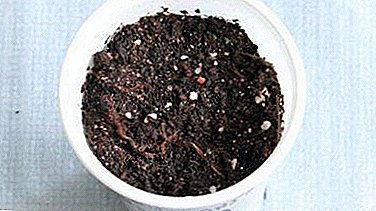 Soft soil with a high proportion of peat is used as a soil.
Soft soil with a high proportion of peat is used as a soil.- Seeds are laid on moist soil, pressed into the soil and covered with a small layer of calcined sand.
- The container is covered with glass or transparent film and subjected to systematic ventilation.
- After 10-12 days, the first shoots should appear.
Possible problems
- Root and light rotting due to excessive watering and insufficient ventilation.
- Drying seedlings with excessive heat and poor watering.
- Pulling seedlings with a lack of light.
- Damage to the stem during rooting.
- Twisting the leaves with excessive air dryness.
- The death of seedlings due to spring frosts.
Proper care rules
- Abundant watering in the first week after disembarkation, then moderate.
- To avoid leaf burns on a sunny day, stop watering.
- Weed the weeds and loosen the ground in the first weeks after planting.
- Feed in the spring and summer once every two weeks with mineral and complex fertilizers.
- Remove yellowed leaves and seed boxes.
- To carry out prophylactic spraying with fungicide against gray rot.
Read more about how to care for ever-flowering begonia at home, described in a separate article.
We invite you to watch a video on how to plant ever-flowering begonia seeds:
Everlasting begonia - one of the most unpretentious and attractive plantswhich is great for growing in the house and outdoors. The flowering plant is abundant and with proper care, it can please with multi-colored flowers all year round. Due to the species diversity, by combining ever-flowering begonias in a flower bed, you can create a true masterpiece of landscape design.


 Soft soil with a high proportion of peat is used as a soil.
Soft soil with a high proportion of peat is used as a soil.